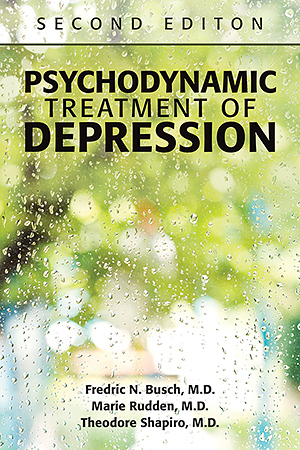Sections
Excerpt
As noted in Chapter 1 (“Introduction”), depressive and personality disorders have a high rate of comorbidity (37.9% in a major epidemiological study; Hasin et al. 2005). In addition, comorbid personality disorders adversely affect treatment outcome, reducing adherence and response (American Psychiatric Association 2013). The most common disorders that co-occur are Cluster C personality disorders, including avoidant, dependent, and obsessive-compulsive personality disorders (Corruble et al. 1996; Friborg et al. 2014). For the most part the presence of Cluster C personality disorders does not require major changes from the techniques described in this book, because there is an overlap in symptomatology and dynamics between these personality disorders and depression. Patients with these disorders often experience guilt and fears about angry feelings and fantasies that can become self-directed, the typical dynamics of depression cycle 1 (see Chapter 2, “Development of a Psychodynamic Model of Depression”). However, as described below, these disorders can benefit from particular emphases on relevant key personality factors. Depression may also occur with Cluster B personality disorders (Corruble et al. 1996; Friborg et al. 2014). In this chapter we discuss comorbid borderline and narcissistic personality disorders, which typically require a more significant modification of psychodynamic approaches to depression.
Access content
To read the fulltext, please use one of the options below to sign in or purchase access.- Personal login
- Institutional Login
- Sign in via OpenAthens
- Register for access
-
Please login/register if you wish to pair your device and check access availability.
Not a subscriber?
PsychiatryOnline subscription options offer access to the DSM-5 library, books, journals, CME, and patient resources. This all-in-one virtual library provides psychiatrists and mental health professionals with key resources for diagnosis, treatment, research, and professional development.
Need more help? PsychiatryOnline Customer Service may be reached by emailing [email protected] or by calling 800-368-5777 (in the U.S.) or 703-907-7322 (outside the U.S.).



